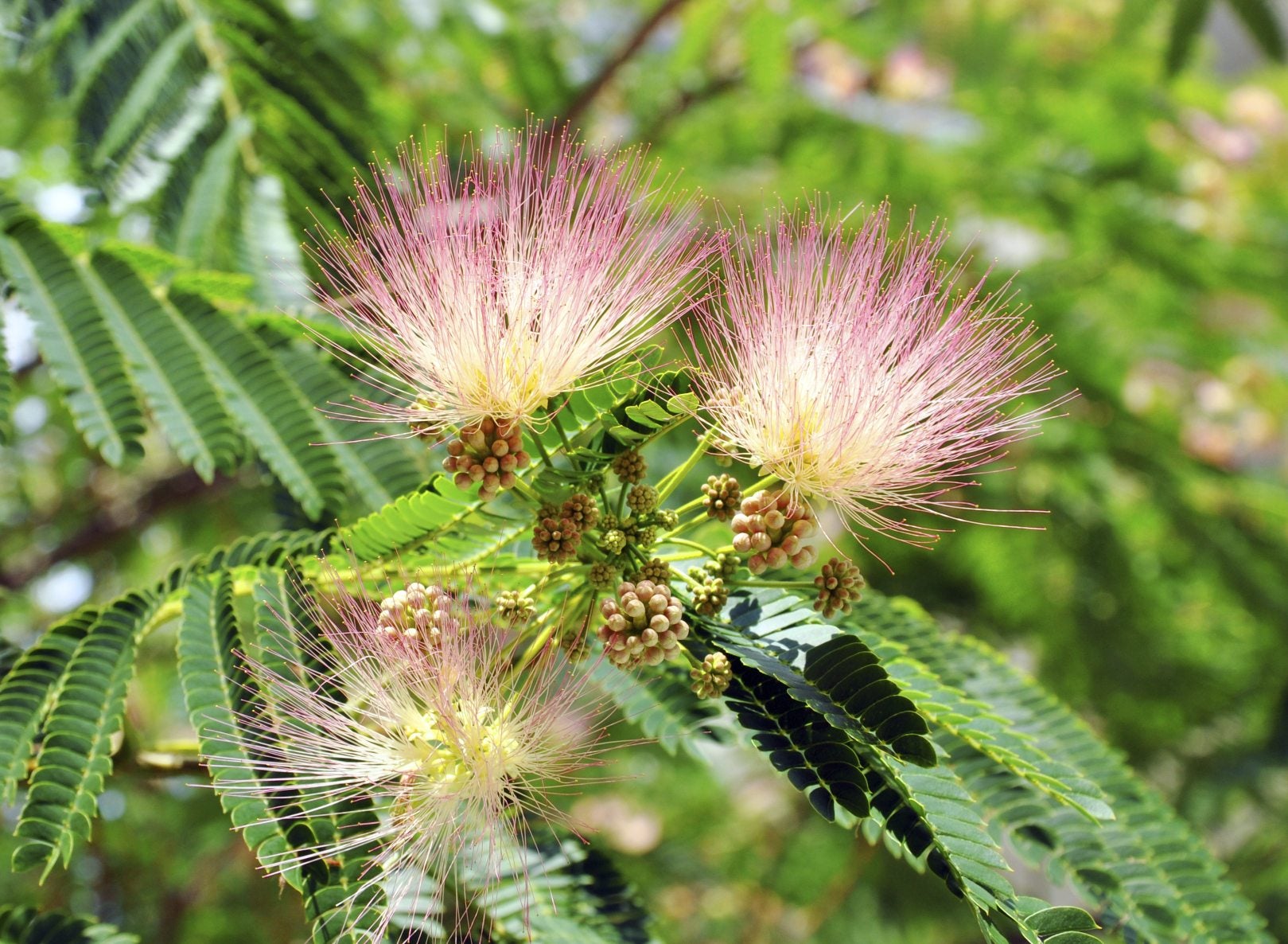Mimosa Tree Facts: Learn How To Get Rid Of Mimosa Tree Weeds


Don’t let the fluffy flowers and lacy foliage fool you. Mimosa trees may not be the perfect ornamental for your garden. If you read up on mimosa tree facts before you plant, you will learn that mimosa is a short-lived tree with weak wood. Moreover, these trees are invasive; they readily escape cultivation and establish in clumps of mimosa tree weeds in disturbed roadside areas, shading out native species. Read on for information on mimosa tree management and control of mimosa trees.
Mimosa Tree Facts
Nobody can deny that the pink pompom flowers of the mimosa tree are attractive. They appear in late spring and early summer on the tips of the small tree’s spreading branches. The tree rarely grows above 40 feet (12 m.), and its branches grow horizontally on the upper section of the trunk. As it matures, it looks a little like a yard parasol. The mimosa was imported as an ornamental from Asia and attracts gardeners with its fragrant and pretty blossoms. However, mimosa tree management proved more difficult than expected. The trees produce thousands of seeds annually in dangling seed pods. Since the seeds require scarification, they can stay in the soil for many years and remain viable. They are spread by birds and other wildlife into nature where they colonize any disturbed areas. Seedlings are often weak and weedy, sometimes termed mimosa tree weeds. Mimosa also propagates vegetatively. The tree produces sprouts around it that can grow into unsightly clumps, difficult to eradicate. Indeed, control of mimosa tree is very difficult once it colonizes property. It is difficult to get rid of a mimosa tree once it has spread, since the seedlings adapt to most soils. Moreover, the plants are not affected at all by hot or dry weather and don’t mind root disturbance. Once you remove native vegetation, the mimosa seeds will leap in to colonize the area. The one force of nature that's effective to get rid of mimosa tree seedlings is cold. One good frost takes them out and that is why one rarely sees mimosa tree weeds or trees crowding along the roadsides in the North.
How to Get Rid of Mimosa Trees
The best way to control mimosa trees is by not planting one in your yard or, if you’ve already planted one, removing it before it seeds. Absent that, you can try to remove it using a variety of mechanical controls. Cutting the trees off at ground level certainly acts to get rid of mimosa trees, but the trunks will resprout. Repeated cutting of spouts or use of an herbicide is required to stop the sprouts. Girdling is also an effective way to get rid of mimosa trees. Cut off a strip of bark all around the tree about six inches (15 cm.) above the soil. Make the cut deep. This will kill the top of the tree, but the same resprout problem remains. You can also take control of mimosa trees by spraying the leaves with systemic herbicides that travel through the plant all the way to the roots. Note: Any recommendations pertaining to the use of chemicals are for informational purposes only. Chemical control should only be used as a last resort, as organic approaches are safer and more environmentally friendly
Sign up for the Gardening Know How newsletter today and receive a free copy of our e-book "How to Grow Delicious Tomatoes".

Teo Spengler is a master gardener and a docent at the San Francisco Botanical Garden, where she hosts public tours. She has studied horticulture and written about nature, trees, plants, and gardening for more than two decades, following a career as an attorney and legal writer. Her extended family includes some 30 houseplants and hundreds of outdoor plants, including 250 trees, which are her main passion. Spengler currently splits her life between San Francisco and the French Basque Country, though she was raised in Alaska, giving her experience of gardening in a range of climates.